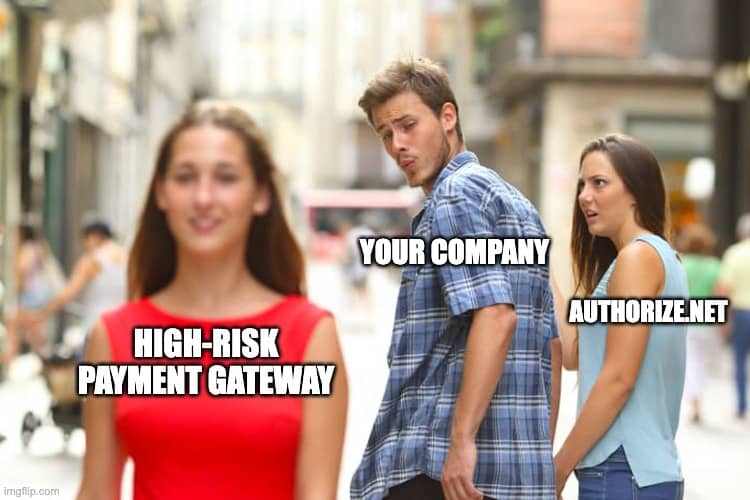VISA FANF Fees: The 2023 Guide for Merchants

As a merchant, you may already be aware of some of the monthly fees associated with different credit card companies. One of the most commonly known is VISA’s Fixed Acquirer Fee (FANF). If you’ve seen this fee on your monthly statements, you may have wondered what it is and if there’s any way to avoid having to pay it. And to make things even more confusing, VISA’s FANF payment structure changes on a regular basis, so the amount you pay can change from month to month.
If you’ve ever wondered why you’re paying this extra credit card processing fee, here’s a rundown on what FANF is, how it’s calculated, why you have to pay it and what you can do to offset these additional transaction charges.
What Is a VISA FANF Fee?
FANF was initially known as the Network Participation Fee (NPF) in July 2012. It was created in response to The Durbin Amendment, a piece of legislation designed to help cardholders save money on their monthly credit card fees. As a result, VISA responded with FANF, hoping to recoup some of its lost profits with this new merchant fee.
If you’ve never noticed the FANF fee on your monthly VISA invoices before, you’ll find it under a variety of designations, including:
- VISA Fixed Acquirer Network Fee
- Fixed Network CNP Fee
- VISA Network Fee
- FNF Fee
- High-Volume Card Present Fee
FANF has nothing to do with your payment processor. The fee is imposed by and goes entirely to VISA rather than to the credit card processor. Also, no other credit card company charges this specific FANF fee. However, Mastercard imposes a similar fee, which is not associated with FANF and is known as the Domestic Other Non-MasterCard Processed Purchase Volume Fee.
If you don’t like paying extra credit card transaction fees, Zenti can help. As a leading payment processing provider for high-risk merchant accounts, Zenti can help you get approved for major credit cards, e-checks, mobile apps and online payment methods, all at low fees that you can afford. Plus, we can help you save money with streamlined payment and invoicing solutions for your business.
What Are FANF Fees Based On?
FANF fees are based on several different factors, including:
- The number of locations you own
- Your merchant category, as designated by your merchant category code (MCC)
- Monthly sales volume
- Method of acceptance, which refers to whether most of your transactions are accepted as card-present or card-not-present payments
- Whether your company belongs to a high-volume category
Unlike other types of fees, VISA’s FANF not only charges according to sales and transaction volume, but it also charges according to your number of business locations and whether or not those businesses are considered to be in a “high-volume” industry.
To clarify FANF calculations, it helps first to define some of the factors involved in VISA’s merchant and transaction designations. Let’s take a look at the definitions for high-volume businesses, MCC codes and card-present vs. card-not-present transactions.
What Are High-Volume Businesses?
As the name implies, a high-volume business refers to a business that sells enormous quantities of items. Sometimes these stores may operate on a low-markup model, as in the case of discount stores, making their profits through their high sales volume. High-volume businesses may include discount retailers and warehouse clubs, fast food restaurants and any type of business that processes vast amounts of transactions in a given day.
As you’ll see in the charts below, VISA’s pricing structure is slightly higher for high-volume merchants. For businesses that conduct an equal amount of card-present and card-not-present transactions, FANF fees will be priced according to the transaction type.
Card-Present vs. Card-Not-Present Transactions
In a card-present transaction, the cardholder and the card are both physically present at the point of sale and the credit or debit card is swiped, tapped, or inserted into a reader if an EMV chip is implemented.
In a card-not-present transaction, the sale is conducted remotely. The card data is entered either by the customer, as in e-commerce sales, or by the merchant or employee taking the information over the phone. As we’ll discuss later, card-not-present transactions will incur higher processing fees.
Card-not-present transactions can sometimes be problematic, but Zenti can bring you the solutions you need. With Zenti, you can streamline payment processing safely and securely and protect your business by mitigating the risks of card-not-present fraud and identity theft.
What Are MCC Codes?
Merchant category codes (MCC) are used by credit card companies to identify specific types of businesses. When a merchant starts accepting a credit card, the company assigns an MCC to that merchant’s business.
Most MCCs are universal, but this isn’t always the case. Some codes may not be recognized by all credit card brands. Likewise, credit card companies have been known to change or even eliminate codes as they update their systems.
MCCs play a role in calculating FANF fees because they’re used to identify high-volume businesses. Here’s a look at some of the most commonly used MCCs among merchants:
| MCC | Business Type | Used by VISA (V) or Mastercard (M) |
| 3000–3299 | Airlines | V, M |
| 3300–3499 | Auto Rental Companies | V, M |
| 3500–3999 | Hotels, Motels and Resorts | V, M |
| 4121 | Taxis and Limousines | V, M |
| 4131 | Bus Lines | V, M |
| 4900 | Utilities (Gas, Electric, Water, Heating Oil, Sanitary) | V, M |
| 5200 | Warehouse Stores | V, M |
| 5310 | Discount Stores | V, M |
| 5311 | Department Stores | V, M |
| 5411 | Supermarkets | V, M |
| 5511 | Automobile and Truck Dealers | V, M |
| 5532 | Tire Stores | V, M |
| 5651 | Family Clothing Stores | V, M |
| 5712 | Furniture Stores | V, M |
| 5732 | Electronics Stores | V, M |
| 5814 | Fast Food Restaurants | V, M |
| 5912 | Drugstores | V, M |
MCC Codes
While MCCs are a vital part of transaction data, they can be used in a variety of other ways as well. For example, businesses, credit card companies and financial institutions can use MCCs for tax reporting, as well as for insights and data about cardholders’ purchasing behaviors.
An Overview of FANF Fees
FANF fees are structured in tiers and these tiers are priced according to a variety of factors, including whether the merchant uses card-present or card-not-present transactions. These are calculated with separate pricing structures, with card-present, or storefront, merchants paying a fee based on how many stores they own.
Here’s a FANF chart showing the current pricing structure for card-present storefront locations:
| Tier Level | Number of Merchant Locations | Monthly FANF for Each Location | High-Volume Monthly FANF per Location |
| 1 | 1 | 2 USD | 2.90 USD |
| 2 | 2 | 2 USD | 2.90 USD |
| 3 | 3 | 2 USD | 2.90 USD |
| 4 | 4 | 2.90 USD | 4 USD |
| 5 | 5 | 2.90 USD | 4 USD |
| 6 | 6–10 | 2.90 USD | 4 USD |
| 7 | 11–20 | 4 USD | 5 USD |
| 8 | 21–50 | 4 USD | 5 USD |
| 9 | 51–100 | 6 USD | 8 USD |
| 10 | 101–150 | 8 USD | 12 USD |
| 11 | 151–200 | 10 USD | 18 USD |
| 12 | 201–250 | 14 USD | 25 USD |
| 13 | 251–500 | 24 USD | 35 USD |
| 14 | 501–1,000 | 32 USD | 45 USD |
| 15 | 1,001–1,500 | 40 USD | 55 USD |
| 16 | 1,501–2,000 | 50 USD | 65 USD |
| 17 | 2,001–4,000 | 60 USD | 75 USD |
| 18 | 4,001+ | 65 USD | 85 USD |
| 19 | Businesses with less than or equal to 199.99 USD per month gross sales volumes | No location fee | No location fee |
| 20 | Business with a monthly gross sales volume that’s greater than or equal to 200.00 USD, but less than or equal to 1,249,99 USD | 0.15 percent | 0.15 percent |
FANF Fees By Number of Locations
As you can see in the chart, for businesses with more than 4,000 locations, VISA caps the price per location at 65 USD per month and 85 USD per month for high-volume companies, which we’ll discuss below.
Also, FANF fees are calculated at a rate of 0.15 percent of gross sales for any month where a small business merchant’s sales volume ranges from 200 USD to 1,249.00 USD.
For card-not-present e-commerce sales, FANF fees are structured according to the following chart:
| Tier Level | Gross Sales Monthly Volume | FANF fee |
| 1 | Less than or equal to 199.99 USD per month | 0 |
| 2 | Greater than or equal to 200.00 USD, but less than or equal to 1,249.99 USD | 0.15 percent |
| 3 | 1,250–3,999.99 USD | 7 USD |
| 4 | 4,000–7,999.99 USD | 15 USD |
| 5 | 8,000–39,999.99 USD | 15 USD |
| 6 | 40,000–199,999.99 USD | 45 USD |
| 7 | 200,000–799,999.99 USD | 160 USD |
| 8 | 800,000–1,999,999.99 USD | 450 USD |
| 9 | 2,000,000–3,999,999.99 USD | 1,000 USD |
| 10 | 4,000,000–7,999,999.99 USD | 2,000 USD |
| 11 | 8,000,000–19,999,999.99 USD | 4,000 USD |
| 12 | 20,000,000–39,999,999.99 USD | 8,000 USD |
| 13 | 40,000,000–79,999,999.99 USD | 16,000 USD |
| 14 | 80,000,000–399,999,999.99 USD | 45,000 USD |
| 15 | Monthly volume greater than or equal to 400,000,000 USD | 70,000 USD |
Card-Not-Present Ecommerce FANF Fees
As you can see from the chart above, monthly FANF fees for online sales can range from a few dollars to tens of thousands. However, the range within these tiers is wide enough so that a merchant who makes 800,000 USD a month will pay the same monthly FANF fee as a merchant who makes just under 200,000 USD.
If your business needs up-to-date, streamlined payment processing services, Zenti can help. With Zenti, you can offer your customers a wide range of payment methods, all at low monthly fees that you can afford. Plus, Zenti can help you add extra layers of security so that each transaction is safe for you and your customers.
What Is a Fixed-Network CNP Fee?
Earlier, we talked about card-present and card-not-present transactions and how they can impact your FANF fees. In particular, card-not-present (CNP) transactions cost more because they impose more risk on the credit card company. Toward that end, if you conduct many CNP transactions, you can expect to be charged a higher fee, as you can see in the card-not-present FANF fee chart above.
VISA charges this fixed-network CNP processing fee to help cover the risks of the CNP transaction. To give you an idea of the scope of this risk, in a 2020 study conducted by LexisNexis Risk Solutions, merchants reported that a staggering 44 percent of their sales losses were due to CNP fraud and identity theft.
Can You Avoid VISA FANF Fees?
Unfortunately, if you’re a merchant, there isn’t any way to avoid VISA’s FANF fees. However, the good news is that you can implement a few strategies to mitigate some of the processing fees and extra transaction costs. These tips should help you get started:
Encourage card-present transactions whenever possible.
Remember, card-not-present transactions are going to cost you higher fees. By encouraging your customers to pay in person, you can eliminate these extra costs, as well as protect yourself against CNP fraud.
Consider adding a surcharge for credit card transactions.
Depending on how successful your business is, tacking on a surcharge could be a great way of passing on those extra fees to your customers. However, be sure to check whether or not it’s legal in your region because some states don’t allow surcharging. Also, be aware that you can’t put a surcharge on a debit or prepaid card.
If you do decide to implement a surcharge, you can also encourage your customers to pay by cash so they can avoid this extra fee.
Consider ACH payments for ecommerce stores.
Automated Clearing House (ACH) is an electronic payment network that transfers money from bank to bank. Direct deposit payments, for example, are handled through ACH. ACH electronic transfers are much faster and more secure than physical checks. Plus, they have no interchange fees, so they’re cheaper to process than credit cards.
Negotiate for a lower fee with your credit card processor.
Did you know that you can negotiate with your credit card processors for a lower fee? The best way to do this is to demonstrate a high transaction volume. This way, credit card processors will see that you’re a valuable customer and may give you a lower rate, so you’ll keep using them.
If you’re tired of paying high credit card processing fees, Zenti can help. We offer affordable merchant account solutions for all types of high-risk businesses. With Zenti, you’ll be able to take all major debit and credit cards, plus e-checks, mobile app payments and other types of online payment methods, all at low processing fees. And unlike some processors, we charge the same rates for every credit card brand.
Additionally, Zenti can provide you with strategies to streamline your business, including up-to-date monthly invoicing and security tools to protect your account and ensure the privacy of your customers.
Contact Zenti to find out how our full roster of merchant account services can help you boost sales, retain customers and reach the next level of success for your business.
Read Next

Find out whether Authorize.Net works for high risk merchants, what restrictions you might face and how to get approved.

Get expert advice on selling CBD products on Shopify, including compliance tips and setting up secure payment options.

Find out why Square may deactivate merchant accounts and steps to resolve issues and maintain uninterrupted payment services.
Need a High-Risk Merchant Account?
Disruption-free payment processing at the best price for your situation, guaranteed.
Get Free Guidance Now!